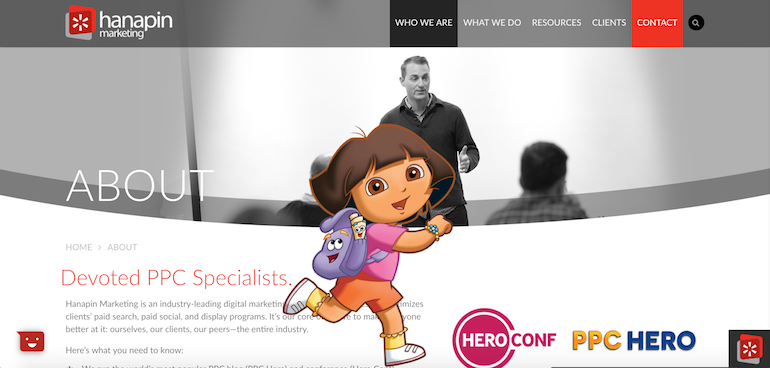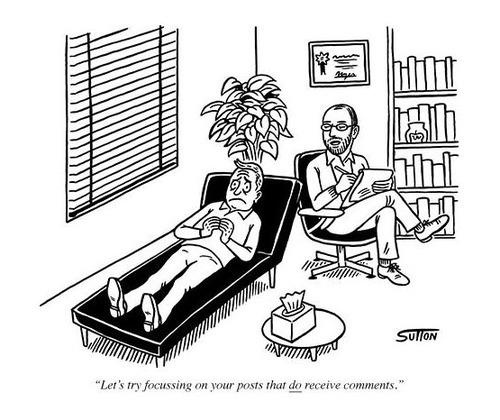What’s one HUGE factor influencing your conversion rate? And not only your conversion rate, but the conversion rate of your returning users? Or even the number of users you have returning? User experience.
As digital marketers, we want to speak to our users about their specific pain points on a level that is appealing and understandable. To do this, we must put on our empathy hats and walk their walks. Ignoring or overlooking users’ experiences can be highly detrimental to your account’s performance in the short and long term game. So today I’m going to elaborate on 5 habits that you should adopt in order to ensure that your users, and their experiences, are rarely overlooked and never forgotten.
1. Perform Regular Site Meanderings
As a marketer, it’s standard to arduously explore the site the first time you get your hands on the account. This exploration enables us to learn multiple key points about a business or, at the very least, identify what is most prominent on the site concerning the business.
This exploration can also be highly beneficial if you put yourself through the funnel. By walking through the funnel and visually seeing the page and experiencing its components and dynamism, you can grasp the full journey of a user from start to finish. We can see the data that this journey reflects in analytics page by page or on a “flow” basis, but data cannot convey frustration. Literal site experience is the only way to truly tap into your users’ emotions while they experience your site. Is it truly a delightful and easy experience? Or is it typical and monotone? Are certain elements of the page completely frustrating to use?

However, there’s a tendency to stop meandering about the site on a regular basis tapping into that whole “I’ve seen it before so of course I know what it looks like” type of mentality.
When you stop walking through the site you stop learning and discovering new things! We are humans and our brains cannot possibly take in and process every ounce of information that we are presented with. We tend to overlook the familiar in preference for novel stimuli. Thus, if we look at the site on a regular basis, we’re also more equipped to find the errors and anomalies and witness when elements are broken, misplaced, or have changed.
Another colossal benefit of regular walk-throughs is that you can take notes every time you hit a point of friction and specify what element you hit and why it was frustrating. When you have completed your walk through, you can then search for data to confirm or deny that the friction points you experienced may also be friction points for the rest of the users as well. If this is the case, you now have a pain point to address via testing and it’s backed by data (and you didn’t have to spend hours in Analytics trying to find the pain point needle in the haystack – yay you!).
2. Run User Analysis On A Regular Basis
I know this may seem obvious, but users are human beings. Human beings tend to be erratic when it comes to behavior right? Yes and no. Each individual’s behavior is erratic and will consistently stay erratic and unpredictable. However, large groups of humans tend to behave in similar patterns over time unless introduced to a catalyst. This means that if you deeply assess one aspect of your users’ behaviors on your site, that behavior is likely to stay consistent until you change something.
This gives you plenty of options. You could do a thorough analysis of your site and assess how your users behave at each step of the funnel along with all of your secondary and tertiary pages in one fell swoop. The big negative aspect of this all-at-once option is that an analysis of this scope takes serious time and effort and, frankly, no one has time for that.
Alas! If you break the exact same analysis down into pieces, you can easily ensure that you knock out a thorough analysis of a small section each month. Make February your checkout page month or your About page month and dedicate time to dig into how your users see and react to that one specific page.
This will enable you to stay detail-oriented and also ensures that over time you will have built out quite the hefty analysis of your entire site that can be profitable for multiple in-house teams.
This also enables you to develop trend lines and baselines on specific user behaviors that can lead to correlations and key insights such as if weather or politics or water level in the local lake or other numerous variables can and will affect your conversions.
3. Keep Feedback Tools Open On Your Site
Tools such as Hotjar, or even chat boxes, contain features that enable what is essentially a paper cup phone that lets your users talk with you about anything and everything. You can get specific if you want to address a certain issue or you can stay broad and let the users tell you whatever they want to share.
Both avenues have their benefits and at least one of these avenues should be open at all times. Contact phone numbers and forms are wonderful if you’re a part of a very small company where any error message or usability issue can be quickly and easily forwarded to your desk so that you can address it. However, this is normally not the case.

These tools bridge that gap and enable you to have immediate feedback while also presenting the user with an easy and usually anonymous, way to tell you how they feel and what they want. Time and time again, users are unbelievably willing to share their feelings with you concerning your site and even your business practices.
Obviously, you can use these avenues to find errors on your site or pain points for your users. You can also use these tools to drive talks of growth and expansion and pulse your organic users for their ideal future products or services or features.
These tools also ensure that you’re consistently exposed to your user vocabulary. This can assist you in your efforts to speak with them on their level in your ads and landing pages as well.
4. Don’t Just Measure Your Conversion Point
When you’re monitoring performance on a website or any type of test, make sure that you’re measuring more than your end goal. Instead of only measuring your end conversions, make sure you’re also tracking how many people are clicking on distracting elements or how many people make it into every single step of your funnel.
This not only ensures that you’re fully aware of your typical metrics for each stage of a conversion, but it also ensures that you’re fully aware of how your test alterations are affecting the entirety of your user experience and not just the sole end goal.
While we all love to increase conversion rate, if the experience suffers your long-term conversion rate shall suffer. Trust me.
5. Always Ask “But Why?” When Staring At Numbers
We all love data and metrics cannot be denied. Do not ignore your data! But when you are analyzing your data, instead of ending your thought process with “Oh look, conversion rate increased by __%”, tag “but why?” onto the end.

Each test is a chance to learn about your users’ preferences. Why did your conversion rate increase? Because you changed something and the users preferred that page with the change, right? Yes, but if you don’t know why they preferred that change then you really haven’t learned anything about your users. Granted, this also probably means that you weren’t thinking of them when you designed the test anyway, but that’s a post for another day.
Each test should be filled with key takeaways about your users based on their behavior when tested. For instance, you test the language in a page headline to make it more succinct and direct. The variation wins. So we can assume that your users may like succinct and direct communication and thus we should go test that message tone throughout the rest of the site.
Each test on your site should influence another test or another topic for you to research because you should constantly be asking yourself “what motivates my users?” If that doesn’t lead you down some efficient and insightful rabbit trails I don’t know what will.
Pro tip – these type of insights are always the most valuable insights to share concerning site tests and changes in most cases. Conversion rate lift is always nice and well received, but going the extra mile to show that your customers are on your mind can never hurt you.
Final Thoughts
[bctt tweet=”I cannot stress this enough: your users are people and they have feelings. ” username=”katewilcoxkcco”]
Educating yourself about these specific feelings and when they occur and how regularly they occur can lead to colossal insights and wins for not only you, but your business as well.
Pick and choose a few of these habits or implement them all and ensure that your users are never neglected! Give me a shout @katewilcoxppc with which habits you choose or if you have any other useful ways of keeping your users on your mind and until then stay calm and PPC on!



